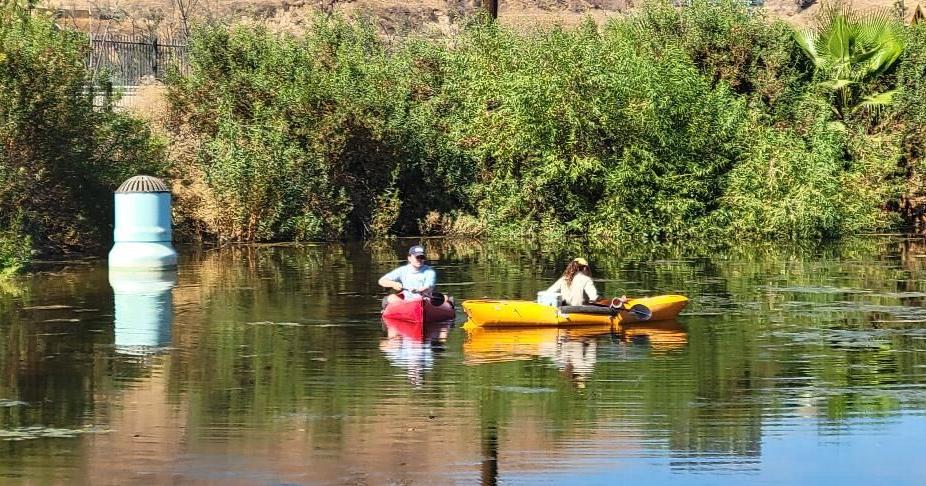Can a pond get old and die? Redlands Conservancy manages Beverley's Pond at the San Timoteo Nature Sanctuary, which has undergone two life-extending “surgeries” in recent years. How is it that a pond, a “small body of water formed naturally or by erosion or containment,” can live, grow old, and die?
According to Martin Lemon, the preserve's volunteer land manager, the lifespan of a pond varies significantly. “Due to natural successional processes, the time span can range from a few years to thousands of years,” Lemon said.
Beverley's Pond formed “naturally” after the 1969 flood that destroyed the bridge over San Timoteo Creek. The rainwater flowed over the creek's natural banks and spread. When the water receded, a pond remained on the far north side.
Coincidentally, the newly created pond was located directly beneath a reservoir that contained residual water from the West Redlands Water Company, owned by neighbor Bill Cunningham. The pond remained stable for a time, but when its water began to evaporate, Cunningham diverted water from the reservoir to maintain the pond's supply.
Until around 2010, the pond served as a resting place for migratory birds and a place to stay for herons, egrets and ducks. Then it filled with reeds called cattails, which grew so densely that they almost completely filled the pond's surface – no room for large birds to land and take off. It was filled with reeds because the bottom of the pond had filled with sediment that flowed into the pond from the new housing development upstream during rain events.
Redlands Conservancy, which now owned a conservation easement on city-owned land, initiated the first “operation” – drying the pond, removing the reeds, digging a deep center and refilling it. Cunningham was able to arrange a private donation to fund the work. The pond was refilled and the birds returned.
A few years later, the drain pipe that diverted overflowing pond water into the creek beneath the Flood Control District access road failed. The City of Redlands followed established protocols, allowed the pond to dry out, and applied for the numerous necessary permits (from local, county, state, and federal agencies); Two years later, city staff managed to install a new drainage pipe. While Redlands Conservancy was poised to refill the pond, this was stalled as further work needed to be done to repair the pond, which had lost its capacity to store water. The pond floor had to be redesigned and sealed before it could become a pond again.
The second “operation” took place in late summer and fall 2023. It involved removing any weeds that had filled the space, digging up the bottom of the pond to form a bowl, sealing the pond with bentonite, and then refilling it. The project lasted until early December and cost about $50,000, which was covered by Redlands Conservancy. The Center for Biological Diversity donated $20,000. Outdoor Ambassador volunteers have developed a system to prevent sediment from entering the pond.
At the end of December 2023, water flowed into the pond again and within a week the ducks returned. The pond, named after Cunningham's late wife Beverley, was alive again. The Pond team monitors pond quality and tests the water four times a year to ensure the longevity of the pond.
What kills a pond? Natural sequence caused Beverley's Pond to disappear: sediment and organic matter filled the pond bottom. Without the interventions and steady water supply, Beverley's Pond would have eventually become a swamp, then a wetland, and soon dry dirt. Other factors that determine the lifespan of a pond include the type of soil, the characteristics of the watershed, the local climate, high nutrient loads and the quality of the seal.
Redlands Conservancy and the City of Redlands are fortunate to have experts to care for the pond and Redlands' open spaces and trails, ensuring they remain places of calm from the chaos of civilization.
For more information about Redlands Conservancy, visit redlandsconservancy.org.
